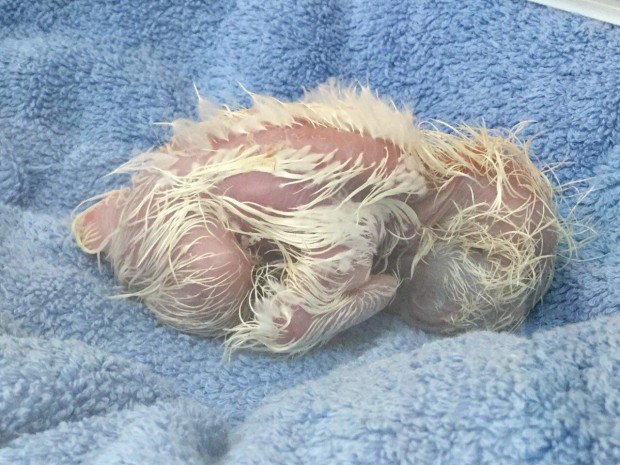
The still unnamed eaglet was hatched last Thursday at the Philippine Eagle Center in Malagos District in Davao City. It is the 27the eaglet bred and hatched in captivity. Photo by Philippine Eagle Foundation (PEF)
DAVAO CITY—This is one rare bird that hopefully no hunter or gunman would ever set his sight on. That, at least, is the prayer of wild life conservationists in the Philippines.
The Philippine Eagle Center here has a new eaglet in its fold—the 27th eagle (Pithecopaga jefferyi) in the country born in captivity.
Still unnamed, the eaglet broke out of its shell on Thursday after 57 days of incubation.
The breeding program of the Philippine Eagle Foundation (PEF) started in 1987. The center is responsible for producing its first eagle, Pag-asa, which was conceived, hatched and bred in captivity on Jan. 15, 1992.
Pag-asa is still soaring in the mountains of Mindanao.
Some Philippine eagles never grew old. In 2008, a 3-year-old male Philippine eagle was killed—and cooked—by a farmer in Bukidnon province.
Several years later, a 3-year-old female Philippine eagle named Pamana was found dead by forest guards in Davao Oriental province with a metal fragment in its heart, an indication it had died of a gunshot wound.
“The 27th eaglet is the second offspring of the natural pair MVP Eagle (male) and Go Phoenix (female) since they became partners in 2013,” PEF curator Anna Mae Sumaya said in a statement.
A milestone
Sumaya said the eagles MVP Eagle and Go Phoenix had been remarkably successful in producing two fertile eggs this breeding season.
The new eaglet is the sibling of Sinag, which was recently adopted by Philippine Airlines.
“This milestone will hopefully usher in a new generation of eagles that will help repopulate our forests and, in turn, serve as ambassadors for saving many other life forms who share the rainforest with them,” said PEF executive director Dennis Salvador.
“We invite everyone to get involved to help our country save its national heritage and treasures,” he added.
Critically endangered
Salvador said the center would “need more space to house incoming eagles as it is now running at full capacity.”
The PEF is trying to boost the critically endangered species’ fight against extinction, in hopes of increasing the Philippine eagle’s population in the wild.
The Philippine eagle is considered an endangered specie because of its rapidly decreasing population.
Twenty-six other eagles are now at the center.
The PEF’s breeding program aims to supplement the eagle population in the wild by replacing those lost to hunting and by reintroducing captive-bred birds to vacant habitats and or habitats occupied by unpaired wild eagles.
At least 400 pairs of Philippine eagles remain in the wild, according to estimates from both the government and private conservation groups.
The foundation depends heavily on donations for its project that includes breeding and mounting an educational campaign to save the endangered species.
At present, the species is classified critically endangered by the International Union for the Conservation of Nature.